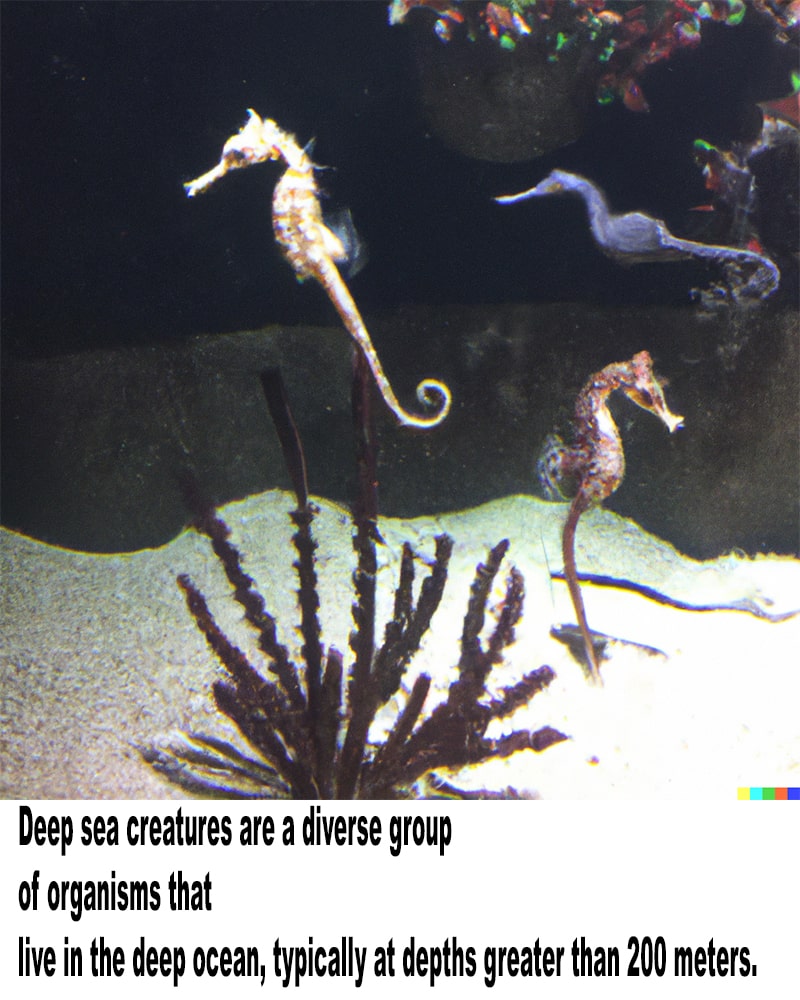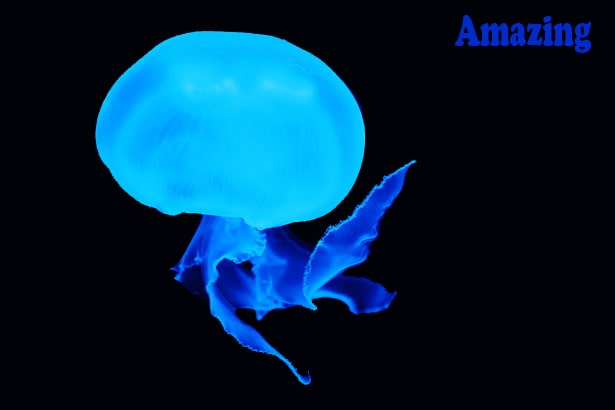Deep sea creatures are a diverse group of organisms that live in the deep ocean, typically at depths greater than 200 meters.
The deep sea is the largest and least explored habitat on Earth, and scientists estimate that up to 95% of it remains unexplored. The deep sea is characterized by complete darkness, extreme pressure, and very low temperatures. Despite these harsh conditions, the deep sea is home to an incredible variety of life forms, many of which have unique adaptations to survive in this harsh environment.
One of the most well-known deep sea creatures is the deep sea anglerfish. These fish are found at depths between 600 and 3,000 meters and are characterized by their bioluminescent lures that they use to attract prey. The anglerfish’s body is also adapted to survive in the deep sea, with large eyes to detect light and a large mouth with sharp teeth to capture its prey.
Another fascinating deep sea creature is the giant squid. These cephalopods are found at depths between 300 and 1,000 meters and are known for their large size, with some individuals reaching up to 43 feet in length. Giant squids have large eyes that are adapted to see in the low light conditions of the deep sea, and they also have two long tentacles that they use to capture prey.
The viperfish is another well-known deep sea creature. These fish are found at depths between 600 and 3,000 meters and are known for their long, needle-like teeth and large jaws. The viperfish’s body is also adapted to survive in the deep sea, with large eyes to detect light and a bioluminescent lure on its head to attract prey.
Another deep sea fish that has a unique adaptation is the Black swallower. They are found in the deep sea and can swallow fish that are larger than their own body. They have a very distensible stomach that can accommodate prey up to 10 times the volume of the swallower’s body.
Deep-sea crustaceans, such as the giant isopod, are also found in the deep sea. These creatures are similar in appearance to terrestrial woodlice, but can grow to be up to 14 inches long. They have adapted to the deep sea by developing a hard exoskeleton to protect against pressure and have a slow metabolism to conserve energy in the absence of food.

- There are also various types of deep sea invertebrates such as the deep sea octopus and the deep sea jellyfish. The deep sea octopus is a highly adaptable creature that is found at depths between 300 and 3,000 meters. They have a unique ability to change the color and texture of their skin to blend in with their surroundings, making them difficult to spot. The deep sea jellyfish, on the other hand, are known for their delicate, translucent bodies and long, trailing tentacles. They feed on small planktonic organisms and are found at depths between 600 and 3,000 meters.
The deep sea is also home to many strange and unknown creatures. Scientists have only recently begun to explore this vast and mysterious habitat, and many new species are being discovered every year.
The deep sea is also an important source of biodiversity, and many of the organisms that live there have unique properties and characteristics that have the potential to be used for medical and industrial purposes.
In conclusion, deep sea creatures are a diverse group of organisms that live in the deep ocean, typically at depths greater than 200 meters. They include fish, crustaceans, cephalopods, and various types of invertebrates. Many deep sea creatures have adaptations that allow them to survive in the extreme conditions of the deep ocean, such as bioluminescence,
The Deep Sea Foods.
- Deep sea creatures have a variety of ways to find and consume food in their harsh environment. Due to the extreme conditions of the deep sea, including complete darkness and low temperatures, food is scarce and many deep sea creatures have developed unique adaptations to find and consume it.
- One common adaptation among deep sea creatures is bioluminescence. Many deep sea fish, such as the anglerfish and the viperfish, have bioluminescent lures on their heads that they use to attract prey. These lures emit a blue-green light that is visible to other deep sea creatures, attracting small fish and crustaceans to the predator.
- Another adaptation that deep sea creatures use to find food is large eyes. Many deep sea fish, such as the giant squid, have large eyes that are adapted to see in the low light conditions of the deep sea. This allows them to detect the bioluminescent flashes of other deep sea creatures and locate potential prey.
- Deep sea creatures also have specialized body structures to capture and consume prey. For example, the giant isopod has a large, sharp mandible that it uses to crush the shells of crustaceans and mollusks. The viperfish also has long, needle-like teeth and large jaws to capture and consume smaller fish.
- Deep-sea creatures also have unique digestive systems that can accommodate the scarce food resources and low-nutrient prey. Some deep-sea fish such as the Black swallower, have a very distensible stomach that can accommodate prey up to 10 times the volume of the swallower’s body.
- Another adaptation that allows deep sea creatures to find and consume food is chemosynthesis. Unlike photosynthesis, which relies on light energy to convert carbon into food, chemosynthesis relies on chemical reactions to produce food. Many deep sea organisms, such as the deep sea octopus, have symbiotic relationships with chemosynthetic bacteria that live in their tissues. These bacteria convert chemicals, such as sulfur and methane, into food for the host organism.
- Deep sea creatures also feed on the dead organic matter that sinks down from the surface waters, called marine snow. This is an important food source for many deep sea organisms and contributes to the food chain in the deep sea.
- In conclusion, deep sea creatures have a variety of ways to find and consume food in their harsh environment. They have unique adaptations, such as bioluminescence and large eyes, to locate potential prey, specialized body structures to capture and consume it, and unique digestive systems to accommodate scarce food resources and low-nutrient prey. Chemosynthesis also plays a role in the food acquisition of deep sea creatures. These adaptations enable deep sea creatures to survive and thrive in the deep ocean, despite its harsh conditions.


Thank you for your sharing. I am worried that I lack creative ideas. It is your article that makes me full of hope. Thank you. But, I have a question, can you help me? https://accounts.binance.com/pt-BR/register?ref=V2H9AFPY